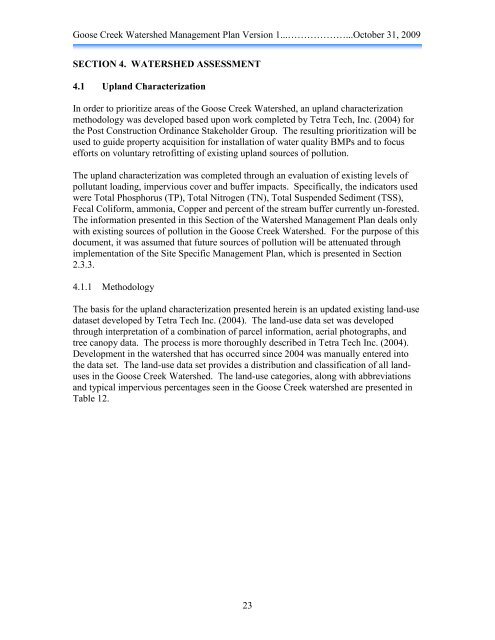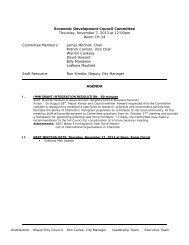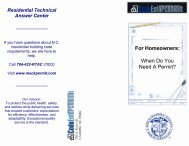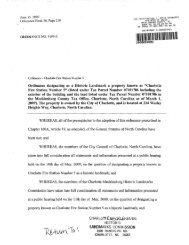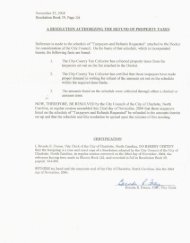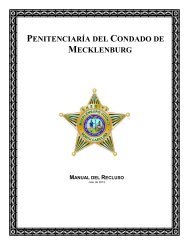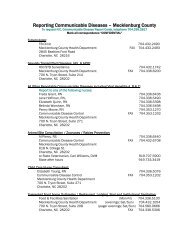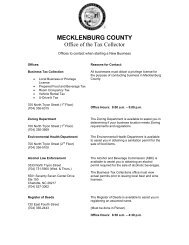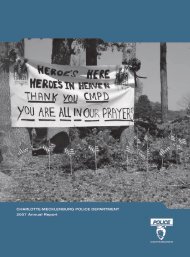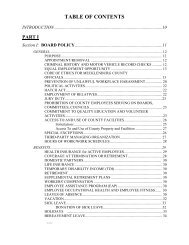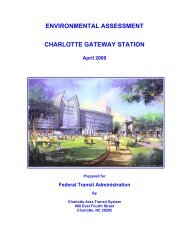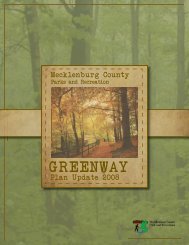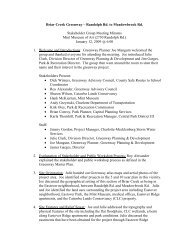Goose Creek Watershed Management Plan Version - Charlotte ...
Goose Creek Watershed Management Plan Version - Charlotte ...
Goose Creek Watershed Management Plan Version - Charlotte ...
Create successful ePaper yourself
Turn your PDF publications into a flip-book with our unique Google optimized e-Paper software.
<strong>Goose</strong> <strong>Creek</strong> <strong>Watershed</strong> <strong>Management</strong> <strong>Plan</strong> <strong>Version</strong> 1...………………...October 31, 2009<br />
SECTION 4. WATERSHED ASSESSMENT<br />
4.1 Upland Characterization<br />
In order to prioritize areas of the <strong>Goose</strong> <strong>Creek</strong> <strong>Watershed</strong>, an upland characterization<br />
methodology was developed based upon work completed by Tetra Tech, Inc. (2004) for<br />
the Post Construction Ordinance Stakeholder Group. The resulting prioritization will be<br />
used to guide property acquisition for installation of water quality BMPs and to focus<br />
efforts on voluntary retrofitting of existing upland sources of pollution.<br />
The upland characterization was completed through an evaluation of existing levels of<br />
pollutant loading, impervious cover and buffer impacts. Specifically, the indicators used<br />
were Total Phosphorus (TP), Total Nitrogen (TN), Total Suspended Sediment (TSS),<br />
Fecal Coliform, ammonia, Copper and percent of the stream buffer currently un-forested.<br />
The information presented in this Section of the <strong>Watershed</strong> <strong>Management</strong> <strong>Plan</strong> deals only<br />
with existing sources of pollution in the <strong>Goose</strong> <strong>Creek</strong> <strong>Watershed</strong>. For the purpose of this<br />
document, it was assumed that future sources of pollution will be attenuated through<br />
implementation of the Site Specific <strong>Management</strong> <strong>Plan</strong>, which is presented in Section<br />
2.3.3.<br />
4.1.1 Methodology<br />
The basis for the upland characterization presented herein is an updated existing land-use<br />
dataset developed by Tetra Tech Inc. (2004). The land-use data set was developed<br />
through interpretation of a combination of parcel information, aerial photographs, and<br />
tree canopy data. The process is more thoroughly described in Tetra Tech Inc. (2004).<br />
Development in the watershed that has occurred since 2004 was manually entered into<br />
the data set. The land-use data set provides a distribution and classification of all landuses<br />
in the <strong>Goose</strong> <strong>Creek</strong> <strong>Watershed</strong>. The land-use categories, along with abbreviations<br />
and typical impervious percentages seen in the <strong>Goose</strong> <strong>Creek</strong> watershed are presented in<br />
Table 12.<br />
23


